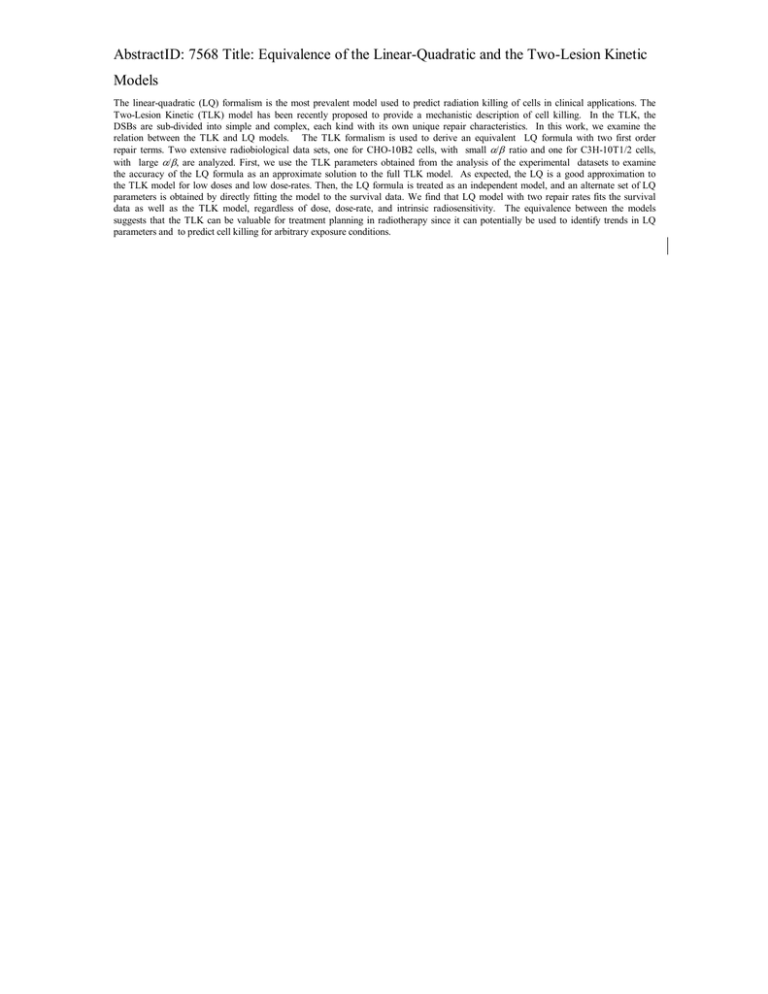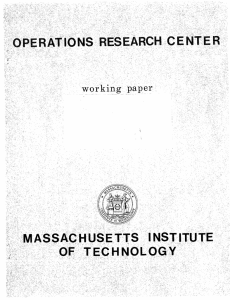AbstractID: 7568 Title: Equivalence of the Linear-Quadratic and the Two-Lesion... Models
advertisement

AbstractID: 7568 Title: Equivalence of the Linear-Quadratic and the Two-Lesion Kinetic Models The linear-quadratic (LQ) formalism is the most prevalent model used to predict radiation killing of cells in clinical applications. The Two-Lesion Kinetic (TLK) model has been recently proposed to provide a mechanistic description of cell killing. In the TLK, the DSBs are sub-divided into simple and complex, each kind with its own unique repair characteristics. In this work, we examine the relation between the TLK and LQ models. The TLK formalism is used to derive an equivalent LQ formula with two first order repair terms. Two extensive radiobiological data sets, one for CHO-10B2 cells, with small α/β ratio and one for C3H-10T1/2 cells, with large α/β, are analyzed. First, we use the TLK parameters obtained from the analysis of the experimental datasets to examine the accuracy of the LQ formula as an approximate solution to the full TLK model. As expected, the LQ is a good approximation to the TLK model for low doses and low dose-rates. Then, the LQ formula is treated as an independent model, and an alternate set of LQ parameters is obtained by directly fitting the model to the survival data. We find that LQ model with two repair rates fits the survival data as well as the TLK model, regardless of dose, dose-rate, and intrinsic radiosensitivity. The equivalence between the models suggests that the TLK can be valuable for treatment planning in radiotherapy since it can potentially be used to identify trends in LQ parameters and to predict cell killing for arbitrary exposure conditions.



